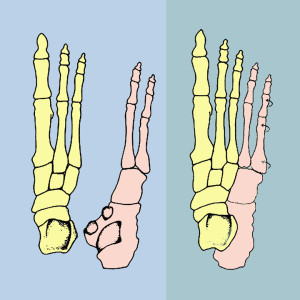Arches of the Feet
There are three arches of the feet; an inner arch, an outer arch, and a transverse arch that spans the middle of the foot.
An arch is a structure that covers a space while supporting weight above it.
Imagine that there are two pillars in space and they are falling towards one another.
Wedge something in between those two falling pillars and we have the makings of an arch.
The wedge that sits between the two pillars is called the keystone. It is thinner as its base and wider at the top in order to sit securely between the pillars.
An interesting thing about this form of an arch is that if you were to put twenty pounds of weight on top of it, it will be strong but if you put 100 pounds on top of the arch it will be stronger.
This of course is predicated on the idea that the weight that sits on top of the arch is centered over it.
Which berings us to the main problem with human posture.
While the arches of the feet are designed to bear the weight that sits above them—good posture is required for effective use of the arches.
Unfortunately most people are not holding their weight centered over the arches and instead the weight of the body tends to fall backwards toward the heel and the support of the arches are thrown in disarray.
We will share a series of posts detailing each of the arches of the feet, their functions, and how they are formed as we move forward.
The feet are the base of it all and if the proper alignment and support don’t begin at the bottom it is highly unlikely that we will have good posture at the top.
***

